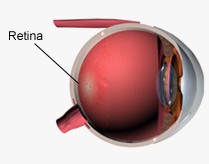Researchers engineer proteins to help restore vision
 Washington, Oct 21 : Engineered light-sensitive molecules, introduced into a blind rodent's eye caused it to see, according to results from an interdisciplinary collaboration among labs.
Washington, Oct 21 : Engineered light-sensitive molecules, introduced into a blind rodent's eye caused it to see, according to results from an interdisciplinary collaboration among labs.
The results could lead to treatment for people with inherited blinding eye diseases such as retinitis pigmentosa which affects one in every 3,000 individuals.
In past studies, researchers made a blind animal's visual cells respond to light by introducing a light-sensitive algae protein into the eye.
This new study manipulates existing proteins that our brains normally use to transmit information among neurons, and makes them light sensitive.
The researchers focused on several light-sensitive proteins, each with its own unique properties that could be fine-tuned to meet researchers' specific needs.
One such engineered protein, LiGluR (Light Activated Glutamate Receptor), can turn neuronal (nerve cell) activity on and off upon illumination with specific wavelengths of light.
"This approach could prove to be a viable therapeutic option for people who have lost significant vision and are in the late stages of retinal degeneration," said lead study author Natalia Caporale, University of California Berkeley.
Compared with naturally occurring photo-sensitive proteins, LiGluR can initiate larger and longer-lasting responses in neurons, making it a promising candidate for treatments intended to restore vision, said a release of the Society for Neuroscience.
The findings were presented at the annual meeting of Neuroscience 2009. (IANS)